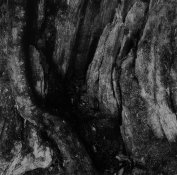DREW WILEY
Member
- Joined
- Jul 14, 2011
- Messages
- 14,546
- Format
- 8x10 Format
Sruddy, For learning purposes, I recommend taking along a large 18% gray card or gray disc with you for awhile, metering that, and then, by comparison metering, learning to recognize what surfaces in the natural world equate to that same midtone value. Finding an equivalent depth of asphalt gray is sometimes possible in a scene, but you probably need to recognize what kinds of vegetation shades do too. After some practice, it becomes intuitive. But that's still going to be just the midpoint value. With TMax films, you're deepest shadows should be no more than 3 stops below that, and you brightest highlights 3 stops above, relative to your "normal" development time, which of course can be adjusted for less or more contrast if needed. Good luck, and just take it a step at a time. You'll get there.







